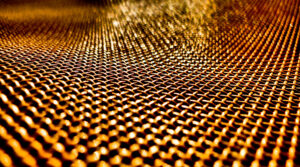Matheus Valente, Associate Editor of Manuscrito; Postdoctoral Fellow at UNICAMP.
As illustrated by recently having been awarded the highest evaluation among all Latin American and Lusophone philosophy journals in the world – the grade Q2 by SCIMago Journal Rank (SJR) Indicator -, Manuscrito has an established reputation as one of the main promoters of state-of-the-art philosophical knowledge-based in the southern hemisphere. Its most recent issue (vol. 44/ no. 1, Jan./Mar. 2021) is a further indication that Manuscrito will continue playing this role for many years to come. This issue collects five independent papers from both renowned professionals in the field as well as from newcomer philosophers from the newest generation. The topics they deal with are varied, but the papers share at least the following two characteristics: a keen eye to rigor and precision in the exposition of ideas and arguments, and a great deal of attention to the most recent literature surrounding the topics under discussion.
Here we highlight Francesco Maria Ferrari’s (Centro de Lógica e Epistemologia, UNICAMP) contribution, the original paper “Process-based Entities Are Relational Structures: From Whitehead to Structuralism”, where traditional – indeed ancient – problematics such as the metaphysical status of processes are investigated in the light of the most recent literature from disciplines such as logic and mathematics. Process-based ontologies are to be contrasted with the vastly more popular substance-based ontologies. According to the latter, the world is to be seen as consisting of the existence of a fixed number of substances with their own characteristics. The focus is on the objects, and reality is conceived as a primarily static collection of objectual substances. A process metaphysics, on the other hand, takes dynamic processes as the fundamental building blocks of the world, objects emerging only secondarily from them. Within that framework, reality is essentially dynamic. This topic is the focus of Ferrari’s publication, where the author sets out to develop these much less popular types of ontologies and to defend the thesis that process-based entities might be conceived as relational structures. Given that relational structures are much more well understood – they have, for example, been subject to extensive formal developments in mathematical disciplines such as category theory -, this conceptual connection is sure to be of significant use to friends of process-based metaphysics.
Ferrari’s paper not only presents an original positive view on how to conceive processes and process-based metaphysics, but also delves deeply into the historical origins of these notions as well as into how we can logically model them. Regarding the first point, Ferrari presents an extensive and historically-informed description of A. N. Whitehead’s “process philosophy” as presented in his classic – but often forgotten – Process and Reality (1929[1978]). Whitehead, much more well known for co-authoring the Principia Mathematica with Bertrand Russell (1910) and setting the foundations of mathematics on fire, was himself one of the prime metaphysicians of his time, developing a peculiar process-based metaphysics which garnered much attention during his heyday, but which subsequently lost most of its popularity. Ferrari’s introduction of Whitehead’s idea in sections 2 and 3 of his paper is thus not only philosophically pertinent but of great historical value.
One key concept to understand process-based ontologies is that of emergence (how complex entities might emerge from basic ones without the former’s causal powers being reducible to the latter’s). By pinpointing Whitehead’s theory’s limitations, Ferrari attempts to develop our understanding of that concept in discussion with one of the most important contemporary philosophers of the field, Jaegwon Kim. Kim (1999, 2006) is well-known for championing the concept of supervenience and making it one of the most important tools in contemporary metaphysical discussions. A set of properties is said to supervene on another if and only if there can be no change/difference in the latter without there being a corresponding change/difference in the former. Kim is confident that the concept of supervenience can be used to make the eluding concept of emergence more precise, but Ferrari is skeptical. As he shows in this contribution to Manuscrito, the presuppositions of Kim’s project implicitly lead us back to the fundamental assumptions of old-fashioned substance-based metaphysics. Fora fully process-based ontology to be developed, as Ferrari argues in the last sections of his paper, we must model dynamic entities by usingthe formally convergent notions of organizations and structures. By bringing in considerations from the mathematical discipline of category theory, Ferrari demonstrates that relational structures are the essentially dynamic entities we need to set free from our “substance ontology” ties, and finally embrace a genuinely dynamic process metaphysics.
On the one hand, eclectic, on the other, consistently rigorous and historically informed, Ferrari’s contribution clearly illustrates Manuscrito’s main philosophical virtues and will be of interest to all readers interested in this discipline’s contemporary debates.
References
KIM, J. Making sense of Emergence. Philosophical Studies [online]. 1999, vol. 95, no. 1 / 2, pp. 03-36 [viewed 16 March 2021]. Available from: https://www.jstor.org/stable/4320946?seq=1
KIM, J. Emergence: core ideas and issues. Synthese [online]. 2006, vol. 151, pp. 547–559 [viewed 16 March 2021]. https://doi.org/10.1007/s11229-006-9025-0. Available from: https://link.springer.com/article/10.1007%2Fs11229-006-9025-0
WHITEHEAD, A. N. Process and Reality. An Essay in Cosmology. Corrected edition by GRIFFITH, D. R. and SHERBURNE, D. W. Nova York: The Free Press Macmillan Publishing Co.,1929[1978].
Whitehead, A. N. and RUSSELL, B. Principia Mathematica. Cambridge: Cambridge University Press, 1910.
To read the article, acess
FERRARI, F. M. PROCESS-BASED ENTITIES ARE RELATIONAL STRUCTURES. From Whitehead to Structuralism. Manuscrito [online]. 2021, vol.44, n.01, pp.149-207 [viewed 16 March 2021]. https://doi.org/ll10.1590/0100-6045.2021.v44n1.ff. Available from: http://ref.scielo.org/m4v4d9
External links
Manuscrito – MAN: https://www.scielo.br/man
Como citar este post [ISO 690/2010]:
















Recent Comments